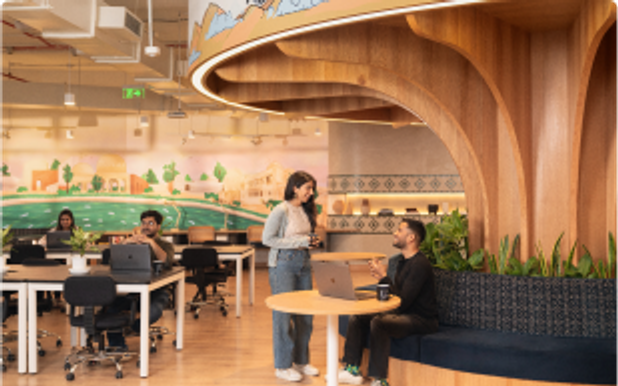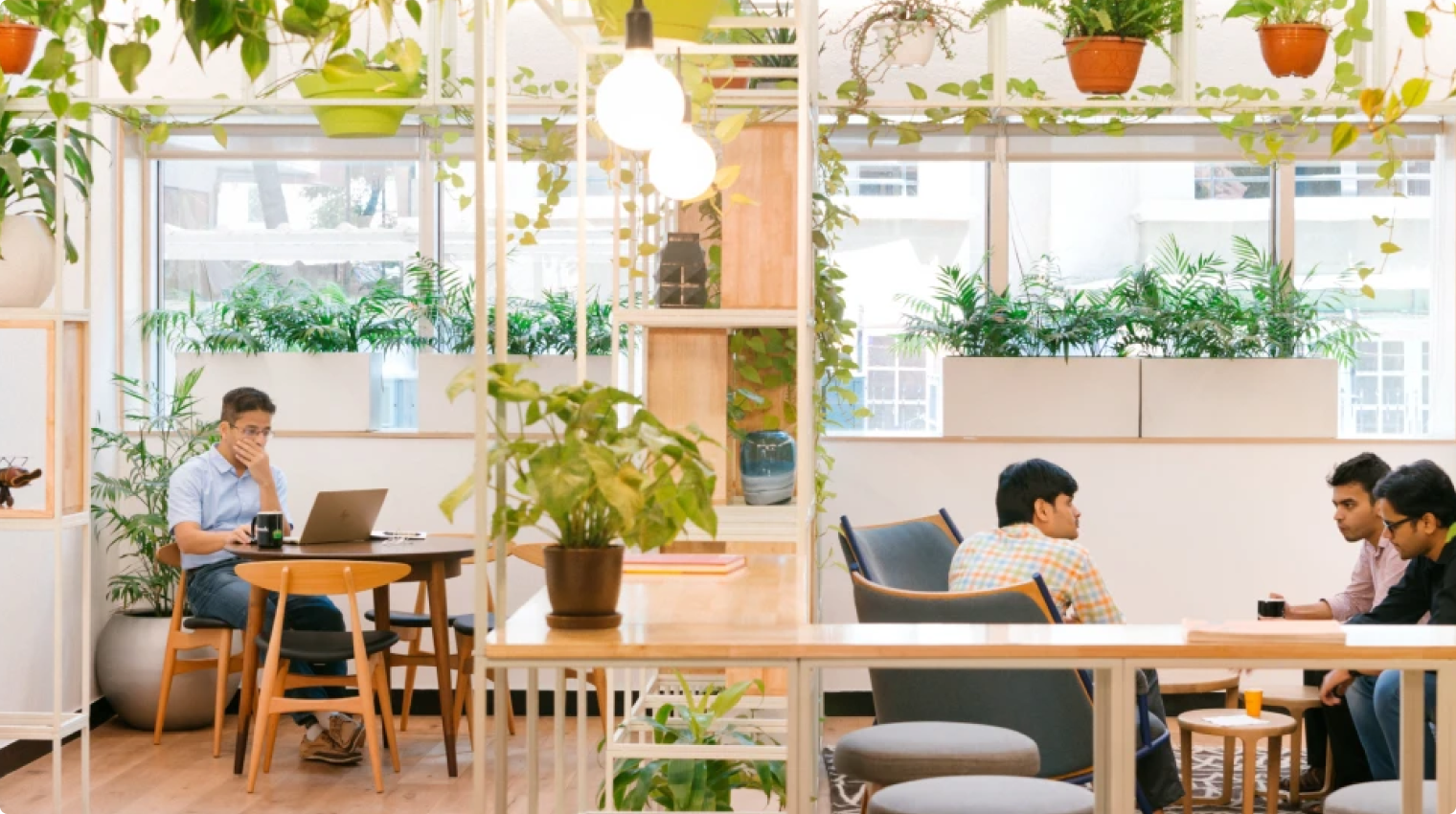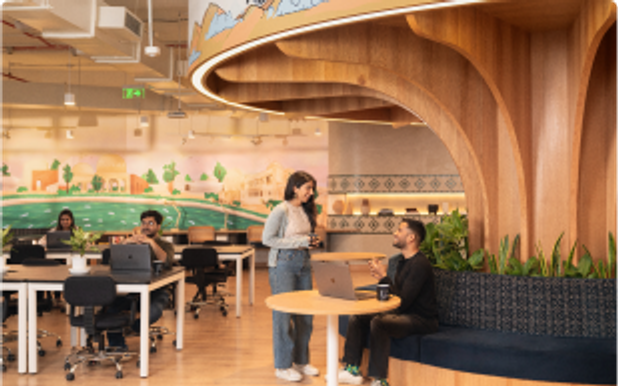NEWS & INSIGHTS
Understanding the Design Thinking Process: A Step-by-Step Guide

Discover the design thinking process—Empathize, Define, Ideate, Prototype, and Test—to create user-centered solutions. Start transforming your strategies today!
What is the design thinking process?
Ever thought what if every product you use felt like it was designed for you? What if you could have delightful solutions to your daily challenges? Today, it is no longer a dream as the approach of design thinking has certainly revolutionised the way businesses think and innovate. But what is this design thinking process? In simple words, design thinking is a way of solving problems that focuses on understanding the people who will use the product or service. It helps create solutions that are not only practical but also useful and meaningful to the users.
In this blog, let’s understand the steps of design thinking in detail and its benefits. We would also understand how WeWork has used the design thinking process to shape spaces that inspire and connect.
What is design thinking?
Design thinking is a simple problem-solving approach that puts the user's needs at the centre of the process. Instead of just focusing on business goals or technical capabilities, it aims to create products and services that people would actually want to use. This approach not only encourages creativity but also helps teams come up with innovative solutions that make a real difference. So, it could be said that design thinking is more than just a process. It is a mentality of making a product or service user-friendly and meaningful.
The 5 steps of design thinking
The design thinking process is usually divided into five steps: Empathise, Define, Ideate, Prototype, and Test. Each of these steps is important to explore problems and create the final solution that is liked by the users. So, let’s dive in and understand in detail about the steps of design thinking.
Step 1: Empathise
The first step in design thinking and innovation is to understand the user, as the entire approach is centred on observing product interaction. It is to understand the people you are designing for. This step involves putting yourself in the users' shoes to see the world from their perspective. You can do this by talking to them, observing how they use a product or service and gathering information about their needs and challenges. If the company is about creating flexible workspace solutions, then it would want to improve its office spaces. For this, they would need to talk to their members to find out what they like, what they don’t like, and what could make their work experience better. This step is all about listening and understanding without rushing to find solutions.
Step 2. Define
Wondering what is ‘define’ in design thinking? Well, now that you know what users expect and understand their needs and challenges, the next step is to identify the problem that needs to be solved. This is the "define" stage. Here, you take all the information you have gathered and figure out what the main issue is. This step is quite important as without having a well-defined problem, you cannot come to a well-rounded solution. So, it helps guide the rest of the process.
In a company like WeWork, defining this step would be asking: "How can we create a more connected and collaborative environment for remote workers?" or “How can we create a more beautiful space for daily interactions?”.
Also read: coworking space vs traditional office
Step 3. Ideate
One of the most significant parts of the design thinking process is ideation. Once the problem is defined, it is time to brainstorm ideas. Once you know what your users expect and what you need to do, it’s time to come up with concepts and strategies to solve to problem. This ‘ideate’ stage is where creativity comes into play. The goal is to come up with as many ideas as possible, even if some of them seem unusual or unnecessary. This is the time to think big and explore all possibilities.
Step 4. Prototype
After generating ideas, the next step is to create prototypes. This step is all about creating simple models. This model or prototype would be a simple version of your idea that you can actually see and use. Hence, it does not have to be perfect. The model just needs to show how the idea could work. Prototyping helps teams see the strengths and weaknesses of an idea before fully developing it. In the world of workspaces, this step could include trying out a new office space layout or setting up a trial version of a new app feature.
Step 5. Test
The last and final step in the design thinking and innovation process is trying out the solution and testing the prototypes. Here, you let real users try these models or prototypes and then gather their feedback. Testing is quite a critical step as it would help you understand in detail what works and what doesn’t. It also helps refine the solution to meet the users’ needs.
Also read: how to stay focus in co working space
Benefits of design thinking
As mentioned earlier, design thinking is quite an effective approach to creating solutions as it focuses on the user and allows for continuous improvement. Here are some of the most significant benefits of design thinking:
- User-centred focus
Design thinking is user-centred as solutions are designed with the user in mind so that they are both useful and desirable.
- Encourages creativity
One of the best things about design thinking is that it encourages creativity. It is all about thinking outside the box and coming up with new and exciting ideas, leading to more innovative and effective solutions.
- Continuous improvement
Design thinking does not stop after the first idea is developed. It also allows for ongoing testing and refining, and this makes it easier to improve solutions over time.
- Promotes teamwork
Design thinking is all about collaboration. It brings together people with different skills and perspectives. When everyone works together, combining their strengths and viewpoints, there is no doubt that the outcome is often more innovative and well-rounded.
How WeWork uses design thinking
WeWork is one of the most popular companies known for offering workspace solutions. We use design thinking to create workspaces that meet the needs of its members. We focus on making our coworking spaces that are not just functional but also comfortable and inspiring.
Also read : what is open office
WeWork regularly listens to its members to understand their needs. We collect feedback through surveys, interviews, and by observing how people use their spaces. Based on the feedback received, WeWork defines specific problems that need solving. For example, if members want more opportunities to connect with others, WeWork might define the problem as needing more social and networking events. Next, we brainstorm ideas to address these problems. Before launching new ideas widely, WeWork tests them in select locations. This makes sure the final product is well-received and truly meets the requirements of the users.
Conclusion
This sums up what is the design thinking concept and how it works out for companies. So, make sure to use this five-step approach before you come to a conclusion to solve problems.
If you are looking for a workspace that truly understands your needs and supports your work style, WeWork is a great option you should not miss out on. With our focus on user experience and continuous improvement, you can be confident about getting a space that is not only functional but also community-oriented. So, without further ado, explore the WeWork workspace solutions today!
FAQs
1. What is design thinking?
Design thinking is a simple problem-solving method where the focus is on understanding the user so that practical and meaningful solutions can be created.
2. Why is design thinking different from other methods?
The main reason behind the difference is the approach. Design thinking puts the user at the centre and encourages creativity with continuous improvement, unlike traditional methods that focus more on business needs.
3. Why is empathy important in design thinking?
Empathy is important in design thinking as it helps you understand the user’s needs and challenges for creating solutions that truly help them.
4. How does design thinking encourage creativity?
Design thinking encourages brainstorming and exploring many ideas, even unconventional ones, to find the best solution.
Related Blogs:

NEWS & INSIGHTS
The world of finance saw a drastic shift in its functional trajectory the moment it was hit by the wave of AI. Like all the other fields of commerce,


